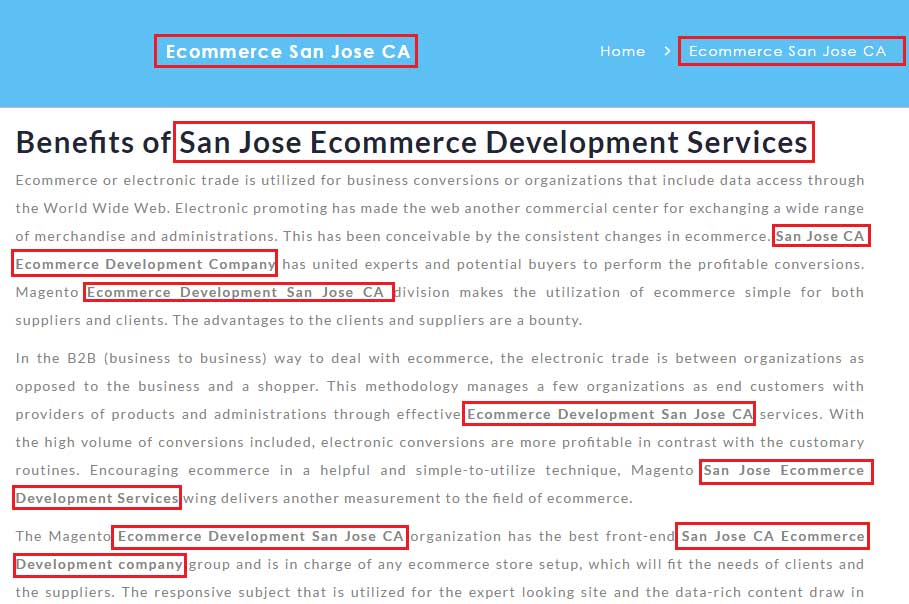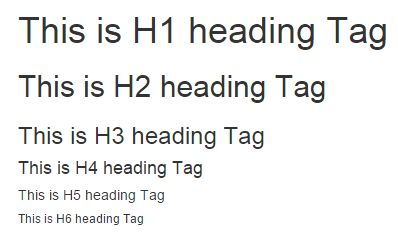Part 4: SEO (Search Engine Optimization) - How to Market Your Cell Phone Repair Store
Your online presence is now in full swing. It’s time to delve deeper into search engine optimization and getting your store found.
A primer:
SEO is all about higher search rankings. People use Google to find solutions to their problems. And
92% of those people
will click a link on page 1.
33% of those clicks
will be on the very first link.
This is where you want to be. This is where everyone wants to be.
And if everyone wants to be there — there will be competition. But never fear. When it comes to small business a targeted and niche approach is the name of the game.
Now look:
There are over 200 ranking factors Google uses
to rank your website. The more relevant your site is to the searcher’s query and intent — the higher you’ll be in the search rankings.
I know what you’re thinking:
Two HUNDRED?!
Yes. Two hundred. But, by focusing on the right elements — you’ll get the highest return for the least effort. This will be your foundation. Let’s begin.
Authority and Relevance
To prime your website for SEO success, you need to start with everything within your control.
Namely — your website.
Here’s a quick rundown on how Google finds your page:
It sends outs ‘crawlers’ which scans the internet for web pages. They then store all the relevant information about each page on their servers. Then, when someone does a search, it uses that information to display the best results.
And how does it determine the best results?
Authority and relevance.
Authority
A website’s authority is a measure of its credibility. It’s determined primarily through your inbound links.
What’s an inbound link?
When another website links to a page on your site — that’s an inbound link. Now, you may be thinking:
So I just need to get a BUNCH of sites and get them to link to my page and I’ll be rank 1 in no time!
Slow down there, Turbo.
The quality of those links matters far more than the quantity of those links. In fact, low-quality inbound links will hinder your SEO efforts and
may even get you penalized.
A high-quality link is one that comes from a website that itself, has a high level of authority. For example, an inbound link from
forbes.com is better than one from philscoolideas.com
The thing about building authority is that it is dependent on the actions of others. A great content marketing strategy can earn you great inbound links. But only if
others are willing to link to it.
Relevancy
Relevancy is how closely your web pages match the intent of a searcher’s query. Relevancy is something you can control. Relevancy is about your website and your decisions.
When a crawler scans your site, it’s looking for things that tell it what each page is about. You can help it by making sure your website tells it exactly what it needs to know.
These are on-page optimizations. Providing consistent and relevant information about your site where the crawlers will look. By focusing first on relevancy you build a solid foundation for your future SEO efforts.
How to Become Relevant
As previously mentioned, there are a lot of ranking factors. Any foray into DIY SEO will bombard you with information. But for your phone repair business? Here’s the best place to begin.
Step 1: Do Keyword Research
Improving your site’s relevance begins with keyword research. A keyword is a phrase customer’s search for. For example, “dropped phone in water” is a keyword.
You should begin by coming up with a list of keywords your customers are most likely to search for. You’ll want to keep in mind local search intent when doing your keyword research. So if your store is in the lower east side of Manhattan — “phone repair store lower east side” is a safe bet.
Steer-clear of keywords like “phone repair” or “iphone repair”. Why?
Remember all that competition we were talking about earlier? Well, some of that competition has the resources to dominate keywords like that. They’re known as short-tail keywords because, well, they’re short. And they’re very hard to rank for.
As a small business, you want to be targeting long-tail keywords. There’s less competition and your business is
way more relevant to the searcher’s intent.
So once you have your list of keywords, use a tool like
Google’s keyword planner
. Input those keywords and find suggestions for other keywords you could rank for. The tool will tell you how competitive each keyword is. And it will also tell you how often it’s searched.
Step 2: Put Those Keywords Into Your Page’s Text
Having a list of keywords to rank for won’t mean anything if you don’t actually put them on your site.
Remember:
Google’s crawlers are looking for relevant information to tell it what a page is about. That’s where you keywords come in. It’s how crawlers will know that your website is about phone repair services.
So, if the main keyword you're targeting is “cell phone repair store nyc midtown", include it in your page’s text.
Now, like with inbound links, keyword placement is about quality, not quantity.
Google reads text like we do, so don’t try and fill your page with keywords. It’s known as keyword stuffing and will get you penalized in the search rankings. Here’s an example:

Don’t do this. Ever. Always write for your visitors — for people. Readability is key.
Step 3: Optimize Your Tags
There are two types of web page tags that you should focus on:
- Title Tags
- Heading Tags
Title tags determine the text displayed when your page appears in search results:

They play a major role in determining your page’s relevancy. You’ll want to include your targeted keyword and brand name. Heading tags come in six variants, from H1 to H6. These are the headings on the pages of your website. They help crawlers determine what each individual page and sections are about.

H1 should be the page’s headline. The subsequent heading tags are for the different sections of your text. It establishes a clear hierarchy for search engines and makes content easier to read.
Include relevant keywords in your heading tags. That is, relevant to the page it’s found on. And again — write for your visitors first. When it comes to writing, always focus on the user experience.
Step 4: Optimize Your URLs
Search engines also look at your URL link structure when determining relevancy. Best practice dictates using lowercase letters and hyphens. You want the URL’s of your pages to be indicative of its contents.
For example, for your services page, instead of:
cellstoresoftware.com/url?sa=i&rct=j&q=&esrc
Use:
cellstoresoftware.com/services
This helps search engines better determine the contents of your site. And from a user experience point-of-view — it just looks nicer.
Step 5: Optimize Your Meta Descriptions
What is a meta description? It’s information about a page. Although meta descriptions are no longer a ranking factor per se, they’re still important:

It’s what displays underneath your title page in search engine results pages. If you don’t set a meta description, Google will derive it from the content on your page. Keep your meta descriptions under 155 characters for total visibility in results pages. Make it valuable to searchers and it can help drive more traffic to your site.
Step 6: Make Your Images Visible
Search engines can’t see images like we can. The way they determine the contents of an image file is by reading their:
- Alt Text — text shown when an image won’t display
- Image Title — what appears when you hover your cursor over an image
- File Name — what you saved the file as on your system
Why is this important for SEO? I’m sure you can guess by now — relevancy. Search engines crawl your entire page, images included. By stating what an image is, you make it easier for the crawlers to better understand your page. And if they can understand it — they can rank it.
Dominating The Search
Once you have relevancy handled your well on your way to SEO domination. But, as all these optimizations were in your control — so too are your competition’s in theirs. You are now well ahead of businesses without any SEO and galaxies ahead of those without a website. But your job is not done. You must now separate yourself from the pack and tackle the next beast: Authority. You build authority through links and earn links through high-quality content. Becoming relevant was the first step. On-page SEO has now set the stage for your site to rise up the ranks. It is another step towards maximizing your online visibility and growing your business.
